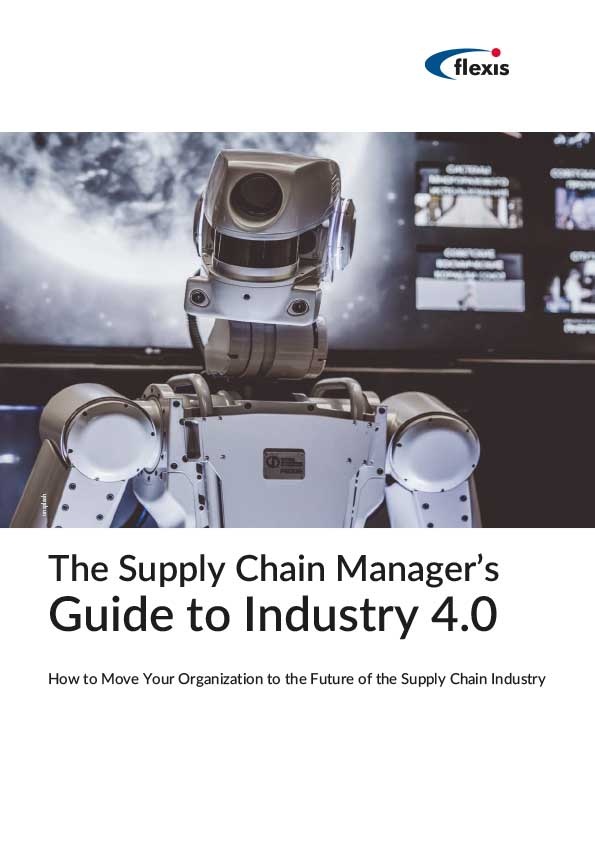How to Balance Carbon Emissions Against Other Supply Chain KPIs
Nicole Wanichko - February 16, 2021

 As companies begin to focus their business strategies towards more sustainable practices, it is vital to narrow this focus onto their supply chains. Greener supply chains can translate into significant financial and commercial benefits for companies, in addition to reducing negative impacts on the environment. These organizational benefits include lower operating costs, a stronger brand, continued social license to operate and improves access to vital resources.
As companies begin to focus their business strategies towards more sustainable practices, it is vital to narrow this focus onto their supply chains. Greener supply chains can translate into significant financial and commercial benefits for companies, in addition to reducing negative impacts on the environment. These organizational benefits include lower operating costs, a stronger brand, continued social license to operate and improves access to vital resources.
So, the big question is, how do you balance controlling and monitoring your carbon emissions against other supply chain KPIs? Adding additional KPIs will take more planning and budgeting, but tracking your company’s carbon emissions could give you a significant boost in long-term saving, developing your company’s image, and more.
Let’s talk KPIs
Key performance indicators (KPIs) are specific metrics used to determine the efficiency of a particular aspect of a business – in this case, the supply chain. While there are many KPIs that an organization should track, it is crucial to focus on a few specific ones to not spread yourself too thin. Most businesses have a handful of concrete KPIs necessary to their operations, but they must find balance with other desired but non-vital indicators. Today, we're talking about monitoring your organization's carbon emissions, so why is this important, and how do you efficiently manage this?
Why it Matters
Supply chains have the most significant room for improvement to meet sustainability goals. The typical consumer company's supply chain creates higher social and environmental costs than any other operation, accounting for more than 80% of greenhouse gas emissions (GHG) and greater than 90% of the impact on air, water, and geological resources. Because supply chains consume at such a massive scale, they are responsible for a significant portion of the world's carbon emissions. These emissions harm our environment by depleting resources, compromising air and water quality, and negatively impacting our planet's health and inhabitants. If that weren't enough, from a commercial perspective, companies are seeing the adverse effects of climate change through declining bottom lines and revenues. This is the result of worsening water scarcity and declining agricultural productivity. Businesses should look to lower their carbon emissions, but for this to be done, they must learn how to manage and balance these changes while maintaining current operations.
Best Practices
 There are four essential steps that your organization should practice to reduce carbon emissions in the supply chain.
There are four essential steps that your organization should practice to reduce carbon emissions in the supply chain.
First, you should build on communications. If you convey your company’s intentions, internally and externally, you are communicating your commitment to sustainability. These intentions will get all organization members on the same page and make for a more cohesive transition to sustainability. Additionally, you should be open and transparently report significant emission reductions and quantifiable savings. Not only will this give you credit from your stakeholders and customers by showcasing your step towards a more environmentally-friendly business, but it will also help you to meet your sustainability targets.
Next, to meet your sustainability targets, you must set the right ones. Your company needs to distinguish between absolute emission reduction targets and intensity reduction targets. Determined by a year-to-year decline in overall emissions, absolute emission targets may appear more successful at first but can be misleading. Climate change will continue even if your emissions per unit of product sold decline if your organization begins to produce more as a result, which is counterproductive. Additionally, you can meet these absolute targets by selling emissions-intensive operations or outsourcing, which again is misleading your organization's actual emissions output. Intensity reduction targets, on the other hand, reflect emissions per unit of product or sales. This factors in your organization's real growth and emissions performance, providing you with a more accurate read of your emissions rates.
Thirdly, it is crucial to integrate information management into your sustainability initiatives. You should link your existing IT systems to carbon management and other sustainability initiatives, which helps you monitor your progress while helping suppliers to meet their stated objectives. Information management not only guides risk assessment but also ensures sustainability performance within tolerance levels. This is increasingly vital as the level of knowledge about GHG emissions and their opportunities for improvement increase each year. Utilizing integrated information management will be immensely helpful in transitioning your leadership to new sustainable practices.
Finally, focus on performance improvement, not compliance. Your company will be more likely to engage and collaborate with suppliers if you move beyond compliance and risk mitigation to identify improvement opportunities. Companies that are successful in this area will then invest in partnerships with suppliers. Additionally, you will have the chance to explore new business models with your suppliers, including entering the growing environmentally-friendly consumer niche. Working closely with sustainability-focused suppliers will help you to build a business case centered on sustainability. But keep in mind that to improve, you must track your progress through metrics and close monitoring. But, be sure to use the right metrics for carbon management. The World Resources Institute/World Business Council for Sustainable Development GHG Protocol offers excellent resources, providing organizations with standards, tools, and courses to better equip themselves to manage their carbon emissions and tracking.
After analyzing these metrics, improve communications with suppliers. Implementing these practices into your organization will allow you to make carbon emissions an essential element of competitive differentiation for you and your suppliers.
Balance your Supply Chain Dashboard
A supply chain dashboard is a vital tool for balancing and organizing your supply chain KPIs. Whether you prefer to check your KPIs one at a time or look at the bigger picture, you are likely utilizing a dashboard to monitor these. As almost all metrics are collected digitally now, it makes sense that we would monitor them the same way. Our blog on Supply Chain Dashboards discusses key tips to balancing KPIs through your dashboard, which is vital when implementing a new KPI, such as tracking carbon emissions. First off, you should be flexible when trying to find specific pieces of data. Understand that you may have to change parameters or scenarios as you work through your dashboard to access certain information. The best way to do this is to view both the near term and long term for which you will have orders, allowing you to visualize changes over time. Next, as mentioned prior, it is important to choose the right KPIs for your organization to be efficient with your time and resources. Decide on the concrete KPIs necessary for your organization, and then move on to secondary indicators that will help with operations but not overwhelm your team. Finally, play around with your dashboard until you feel comfortable with the options and scenarios it provides to you, and continue to make upgrades and changes as your organization needs.
Sustainability is the future, and it is vital for businesses to keep up or be left behind. By incorporating sustainable business practices and reducing your carbon emissions, your organization will flourish in countless ways, but you must find balance among other KPIs to achieve this. By creating a transparent plan with open communication while closely monitoring a personalized supply chain dashboard, your organization will be able to reduce negative environmental impacts while finding growing success.
LATEST POSTS
- Understand Circular Economy in The Manufacturing Industry
- How Can Industry 4.0 IT Integration Be Achieved Smoothly?
- The Significance of Order Sequencing in Discrete Manufacturing
- How to improve your Supply Chain Management: The Power of Control Towers
- Optimizing Human Resource Scheduling in Manufacturing: A Technological Approach



